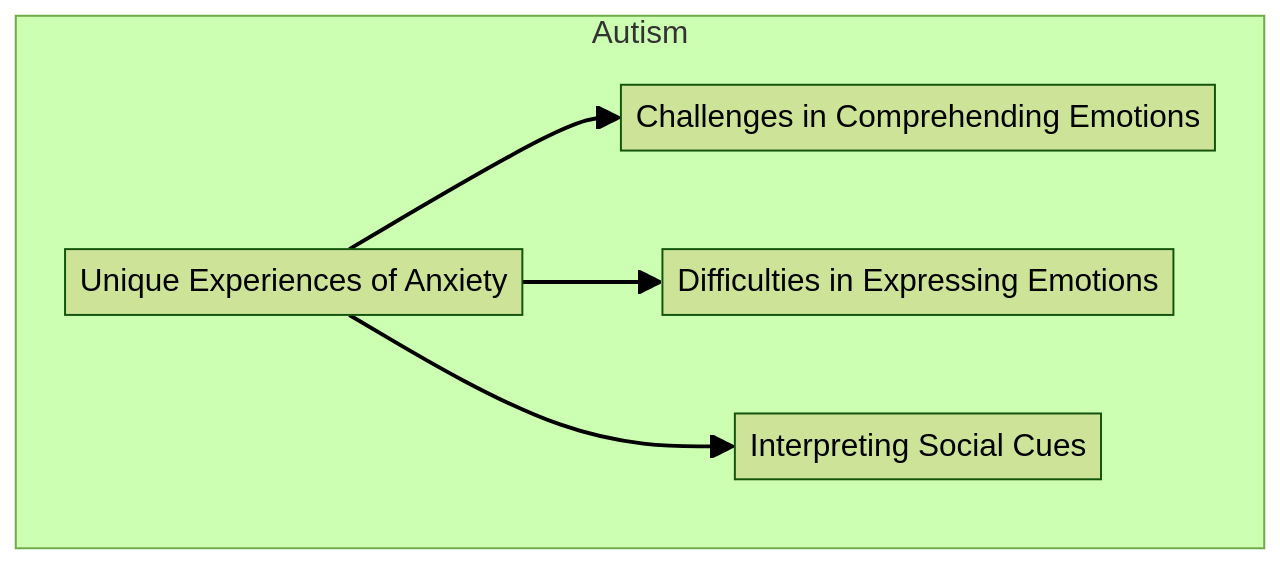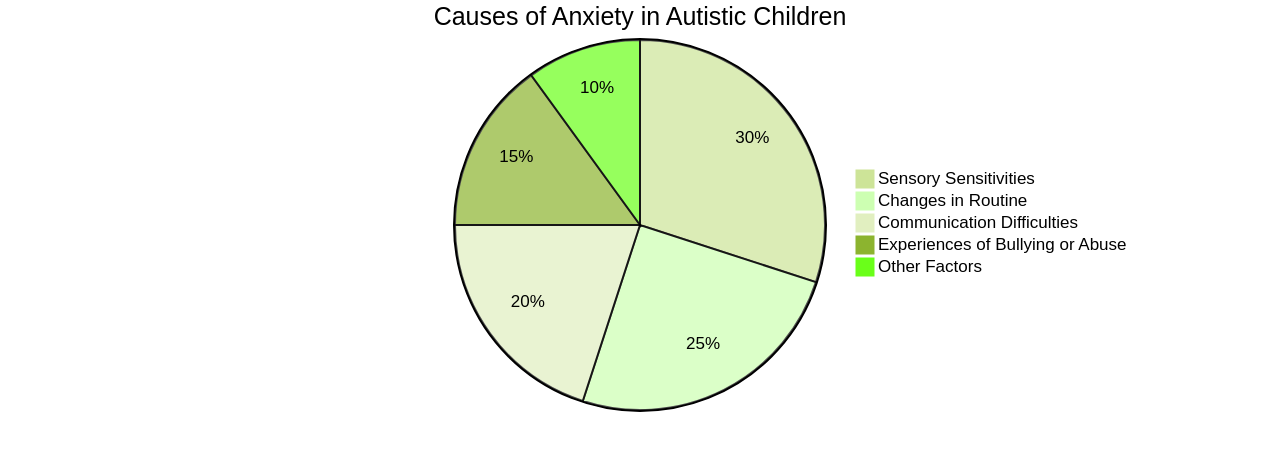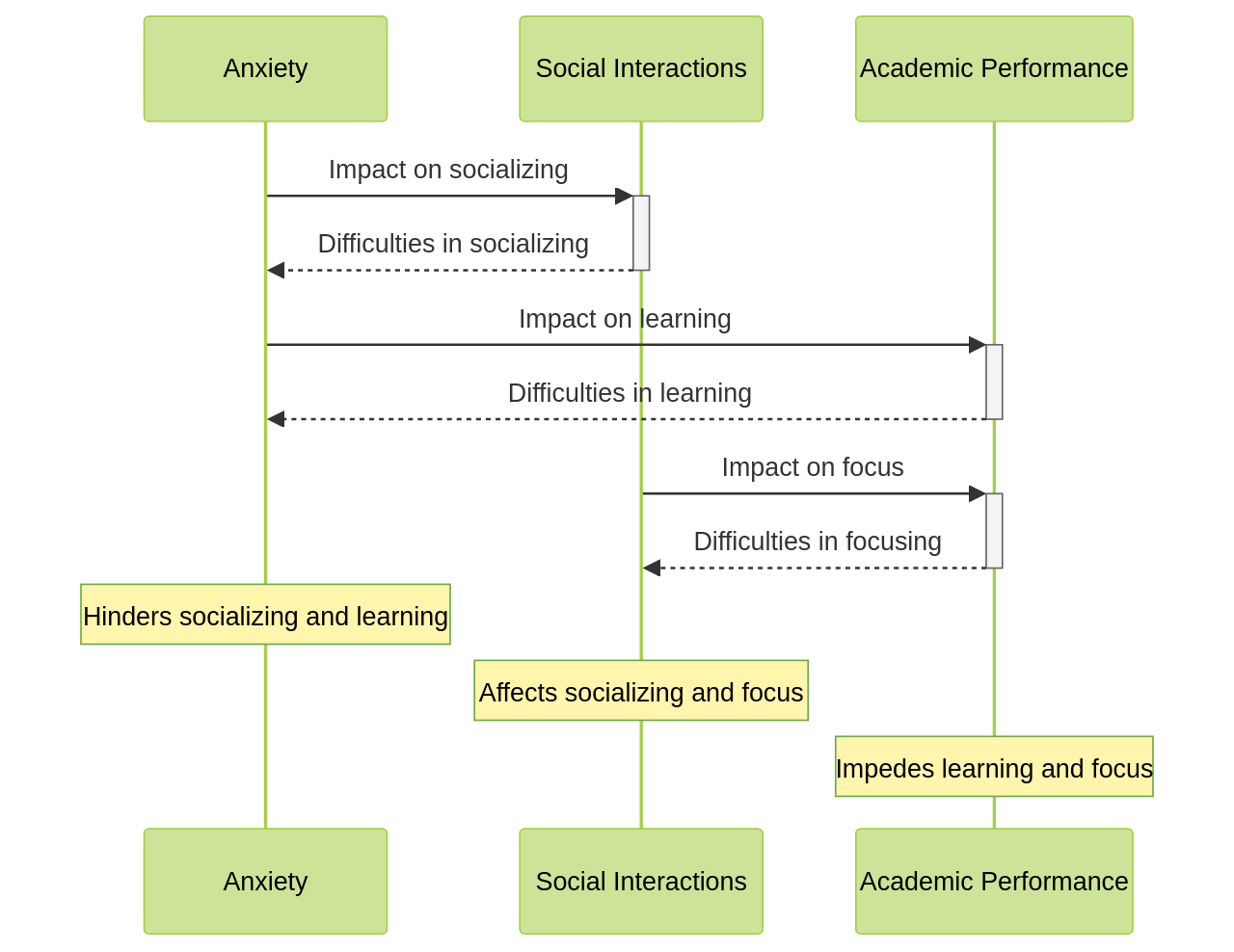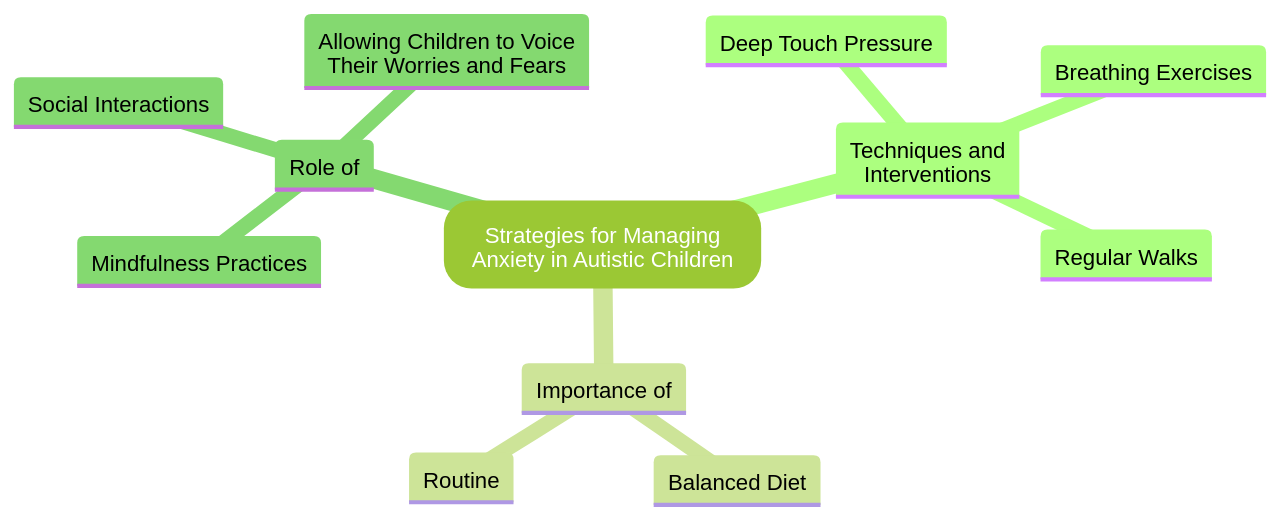Introduction
Anxiety is a common emotion that all individuals experience, but for children on the autism spectrum, it can be a more intense and frequent occurrence. Autistic children often struggle with comprehending and expressing their emotions, which can amplify their anxiety levels. Additionally, difficulties in interpreting social cues can contribute to heightened social anxiety in these children. Understanding the unique nature of anxiety in children with autism is crucial for effectively managing it and providing the necessary support.
In this article, we will delve into the topic of anxiety in children with autism, exploring its causes, impact on social and academic life, and strategies for parents to address and manage it. We will also discuss the role of ABA therapy in managing anxiety, the importance of building a supportive community, accessing resources and support services, and empowering parents as advocates for their children. By gaining a deeper understanding of anxiety in autistic children and learning effective strategies, we can support their well-being and help them thrive in all aspects of their lives.
1. Understanding Anxiety in Children with Autism
Experiencing anxiety is a part of the human condition, something we all encounter at some point in our lives. But when it comes to children on the autism spectrum, the situation can be significantly more challenging. Their experiences with anxiety can be more intense, occurring more frequently than their neurotypical peers. One contributing factor is their struggle with comprehending and articulating their emotions, which can amplify their anxiety levels.
Their challenges don't stop there. Autistic children can often find it difficult to interpret social cues, a key aspect of human interaction. This can lead to heightened social anxiety as they try to navigate social environments. To truly help these children, we must first endeavor to understand the unique nature of their anxiety.

This understanding forms the cornerstone of effective management strategies that can ease their journey through life.
Children on the autism spectrum can encounter anxiety in ways that may seem atypical or exaggerated when compared to neurotypical children. Their struggle with expressing emotions can often exacerbate their anxiety. It's also important to note that their difficulty in interpreting social cues can lead to a heightened sense of social anxiety. Understanding these unique experiences of anxiety is the first, crucial step towards managing it effectively.
In essence, it's important to remember that while anxiety is a common emotion, for children with autism, it is often an intensified and more frequent experience. Their struggles with understanding and expressing their feelings, combined with difficulties in interpreting social cues, contribute to their heightened anxiety. Recognizing and understanding the distinct nature of anxiety in children with autism is the key to effectively managing it.
2. Why Might Autistic Children Experience Anxiety?
Children on the autism spectrum can sometimes experience heightened levels of anxiety due to a multitude of factors. Sensory sensitivities, such as an aversion to loud sounds or intense lights, can often lead to feelings of unease. The complexity of social interactions can also be a source of stress, as these children may find it challenging to navigate and interpret social cues.
Changes in routine can also be anxiety-inducing, as autistic children typically find comfort in the predictability and structure of a regular schedule.

Moreover, these children may encounter difficulties in accurately understanding and expressing their own emotions, which can compound their feelings of anxiety.
However, there are numerous strategies and techniques that can help in alleviating these feelings of anxiety. Deep touch pressure, for example, can have a calming effect. This can be as simple as giving your child a reassuring hug. Yoga stretches, too, can be beneficial, as they can help soothe the senses and relieve anxiety.
Breathing exercises are another effective tool. Encouraging your child to take deep breaths can help them regain control of their emotions during moments of heightened anxiety. Regular walks can also be beneficial, as they not only provide a change of scenery but also have a positive impact on mood.
In environments where there is a lot of background noise, using noise-canceling headphones can help reduce feelings of being overwhelmed. Similarly, listening to calming music, especially classical pieces, can help soothe anxiety.
It is also important to teach children to step away from situations that cause them anxiety when possible. Parents and caregivers can model these calming techniques, making it easier for children to learn and apply them.
Remember, it's crucial to acknowledge that everyone reacts differently to stress and anxiety, and what works for one child may not necessarily work for another. It is therefore essential to explore different strategies and find what works best for your child. Remember, support networks are available for additional assistance if needed.
3. The Impact of Anxiety on Autistic Children's Social and Academic Life
The influence of anxiety on the lives of children with autism spectrum disorder (ASD) goes beyond just the emotional aspects, extending to their social interactions and academic performance.

On the social front, anxiety can pose significant challenges for these children, making it harder for them to interact with their peers. This difficulty in social interaction often leads to feelings of isolation and loneliness.
From an academic perspective, anxiety can interfere with a child's ability to focus and learn, which may result in lower academic performance. It's not uncommon for children with autism to experience physical symptoms of anxiety, such as heart palpitations, sweating, and gastrointestinal upset. These symptoms, coupled with emotional distress like worry and unease, can hinder their ability to concentrate on academic tasks.
There are a myriad of factors that contribute to anxiety in autistic children, some of which are medical, while others are non-medical. Non-medical causes can range from a lack of communication skills to experiences of bullying or abuse. On the other hand, medical causes may include systemic chronic inflammation, low total cholesterol, cerebral folate deficiency, and elevated glutamate and low GABA.
Addressing anxiety in children with autism is crucial for their overall well-being and involves a multi-faceted approach. This includes therapies like cognitive-behavioral therapy (CBT), transcranial magnetic stimulation (TMS), and neurofeedback, coupled with mindfulness techniques, visual schedules, and choice boards. In some cases, deep pressure activities and certain supplements or prescription medications, such as inositol, N-acetylcysteine (NAC), GABA, L-theanine, valerian root, lithium orotate, CBD hemp oil, 5-HTP, vitamin C with bioflavonoids, and ashwagandha, can be beneficial.
Furthermore, a proper diet and regular exercise can play a significant role in managing anxiety in autistic children. A focus on reducing inflammation and incorporating regular physical activity into the child's routine can help alleviate anxiety symptoms.
It's important to remember that each child is unique, and what works for one may not work for another. Therefore, identifying and treating the root cause of anxiety is essential. In this regard, seeking the help of a functional medicine doctor or specialists can be instrumental in managing anxiety symptoms in children with autism. By addressing these challenges head-on, we can help ensure that children with autism can thrive in all aspects of their lives.
4. Recognizing the Signs of Anxiety in Autistic Children
Grasping the signs of anxiety in children with autism can be intricate, given that their emotional expressions might differ considerably from their peers. Key indicators to be alert for encompass heightened restlessness, disrupted sleep patterns, and alterations in conduct or disposition. Physical manifestations such as abdominal discomfort or headaches can also be symptomatic of anxiety. Upon observing these indicators, it's crucial to pursue expert assistance to address the child's anxiety.
Anxiety is prevalent among individuals with autism, with nearly 40% of children with autism experiencing at least one concurrent anxiety disorder. Symptoms of anxiety in autism can range from physical manifestations such as heart palpitations, perspiration, and gastrointestinal distress, to emotional symptoms such as feelings of worry and unease.
Anxiety in autism can be attributed to both medical and non-medical factors. Non-medical causes can encompass a lack of communication, bullying, and mistreatment. Medical causes can include chronic systemic inflammation, low total cholesterol, cerebral folate deficiency, elevated glutamate and low GABA, mast cell activation, overgrowth of pathogenic gut bacteria, and impaired adrenal function.
Management of anxiety in autism can entail various strategies, such as therapy, mindfulness, visual schedules, deep pressure activities, supplements or prescription medications, diet, and exercise. Therapeutic options for managing anxiety can include Mendability, cognitive behavioral therapy (CBT), transcranial magnetic stimulation (TMS), and neurofeedback.
Supplements that may aid in managing anxiety include inositol, N-acetylcysteine (NAC), GABA, L-theanine, valerian root, lithium orotate, CBD hemp oil, and 5-HTP. Prescription medications that may be used include propranolol, memantine, oxytocin, and hydroxyzine.
Diet and exercise can also play a significant role in managing anxiety, with a focus on reducing inflammation and incorporating regular physical activity. It is important to treat the root cause of anxiety in autism and seek out the help of functional medicine doctors and specialists to improve overall health and well-being.
5. Strategies for Parents to Address Anxiety in Autistic Children
Children living with anxiety face unique challenges, and as caregivers, we need to arm ourselves with the right strategies to help them navigate these difficulties.

A potent tool in our arsenal is the establishment of a predictable routine, as it fosters a sense of security and control, both of which are key in reducing anxiety levels.
Beyond this, crafting a nurturing and safe environment plays a significant role. This can be accomplished by maintaining a balanced diet for the child, ensuring they get adequate sleep, and promoting regular physical activity. For example, children aged 3-6 years should aim for 10-12 hours of sleep each night, those aged 7-12 years should aim for 10-11 hours, and teenagers between 13-18 years should get 8-9 hours.
Incorporating visual aids can also prove to be a valuable asset in helping children understand and articulate their emotions better. These aids can visually display complex feelings, simplifying them for better comprehension and communication.
In our digital era, mindfulness practices like meditation can be conveniently introduced to children via apps such as Calm or Headspace. These practices have demonstrated efficacy in reducing anxiety and stress, enabling children to handle their emotions more effectively.
Promoting social interactions is another vital strategy. This can be accomplished by facilitating opportunities for the child to participate in social activities, which can boost their social skills and confidence.
A crucial aspect to bear in mind is the importance of allowing children to voice their worries and fears. This can be achieved by fostering an open dialogue where they can openly discuss their feelings. In certain scenarios, involving a therapist who can provide professional support in managing these concerns can be advantageous.
Another impactful strategy is assisting children in gradually conquering their fears. For instance, encouraging brief periods of separation from a parent can help them grow more comfortable with the concept over time.
Finally, if a child displays signs of intense fear or sadness, it's imperative to seek advice from a healthcare provider. This ensures the child's mental health is monitored and managed effectively, and any necessary interventions can be implemented promptly.
Remember, as caregivers, our role is not just to eliminate anxiety, but to arm our child with the tools to manage it. It's a journey that demands patience, understanding, and, above all, love.
6. Role of ABA Therapy in Managing Anxiety for Autistic Children
The transformative impact of Applied Behavior Analysis (ABA) therapy in addressing anxiety among children on the autism spectrum cannot be understated.

ABA therapy employs the power of positive reinforcement to foster desirable behaviors and curtail those that are less desirable. This technique empowers children to gain control over their anxiety, equipping them with coping mechanisms they can apply in their daily lives.
Moreover, ABA therapy extends its benefits beyond anxiety management. It aids in the development of vital social skills, which can significantly alleviate social anxiety. This is particularly beneficial for children on the autism spectrum who often grapple with social interactions.
Notably, the UC Davis Mind Institute, renowned for its research on neurodevelopmental disabilities, including autism, has made significant strides in this area. The institute's ACESTAAR study, for instance, seeks to identify anxiety in children with Autism Spectrum Disorder (ASD) and evaluate the efficacy of cognitive-behavioral therapy (CBT) or medication in mitigating these symptoms.
The ACESTAAR study involves a comprehensive program of behavioral and cognitive testing, remote therapy sessions, and medication administration. Participants are randomly assigned to either the CBT group or the medication group, which may include sertraline or a placebo. This randomness ensures unbiased results, providing a clear understanding of each treatment's effectiveness.
The Mind Institute's work underscores the potential of ABA therapy and its positive implications for managing anxiety in autistic children. By advancing our understanding of treatment options and their effectiveness, we can better support children on the spectrum in managing their anxiety and thriving in their social interactions.
7. Building a Supportive Community: Sharing Experiences and Learning from Each Other
Building a supportive community is a key factor for parents raising children with autism. Navigating their child's diverse needs can be eased through collective learning and shared experiences. Resources like Other Parents Like Me (OPLM) and Parentween Connection are instrumental in this journey.
OPLM serves as a comprehensive online support system, offering parents a variety of resources, toolkits, and a mental health glossary. These resources empower parents with the necessary understanding and strategies to support their child's unique needs. OPLM's platform also facilitates the formation of support groups on various topics, providing parents an opportunity to glean insights from shared experiences.
The platform extends its support by providing a space for parents to share their personal stories and insights through blogs. Additionally, it offers guest speaker sessions by industry experts, both live and recorded, bestowing a wealth of knowledge and perspectives to parents.
OPLM also encourages parents to become peer parents, thus fostering a network of shared experiences and mutual support. The platform additionally provides financial aid options and answers common queries through its FAQ section. The multitude of resources and support services available on OPLM make it a comprehensive platform for parents seeking guidance and community.
The Parentween Connection offers a similar support network, providing a judgment-free zone for parents and families to connect and support each other. It offers a podcast, exclusive interviews, a discussion forum, and a network of trusted experts. Through these resources, parents can find guidance and professional help tailored to their unique needs.
The platform further promotes community connection by hosting local communities and events, and even offers an internship program. It emphasizes connection and support, with upcoming connection calls scheduled throughout the year. This platform, powered by Neon One, aims to prevent suicide among tweens and provide support to families in their journey.
Incorporating the solution context, parents of children with autism can consider joining online communities and support groups specifically designed for their unique needs. Platforms like Facebook and Twitter also host groups and pages dedicated to parents of children with autism, offering an opportunity to connect with others facing similar challenges.
In summary, building a supportive community is crucial in providing the necessary support and guidance to parents of children with autism. Platforms like OPLM and Parentween Connection, along with the suggested online communities and social media groups, provide resources, community, and a safe space for parents to learn, share, and connect.
8. Accessing Resources and Support Services for Managing Anxiety
The journey of managing anxiety in children with autism is made easier when parents have access to the right resources and support systems. A myriad of these resources can be found at the Association of University Centers on Disabilities (AUCD). They have a vast library of webinars hosted by experts in the field, with topics ranging from the role of big data in autism research, to the health outcomes of diverse autistic adults. AUCD's webinar library is a treasure trove of knowledge, accessible at your convenience, and searchable to pinpoint the exact resources you need.
A notable webinar in the collection is "The Role of Big Data in Research on Autism Physical Health Challenges Promising Approaches and Real-World Implications". This session focuses on leveraging large datasets to improve health equity for autistic individuals. Another insightful webinar, "Health Outcomes for Sexually Diverse and Gender Diverse Autistic Adults", sheds light on the health disparities among sexually and gender diverse autistic adults. In addition to these, the library contains a total of 569 webinars, each addressing various aspects of autism and offering strategies for managing anxiety.
Beyond webinars, AUCD also offers a wealth of resources such as toolkits, publications, and brochures on diversity and inclusion. Their various initiatives and networks focus on different areas like public health, autism intervention, and audiology, providing a comprehensive approach to support individuals with disabilities and their families.
Another valuable resource is the UCLA Cares Center, which is dedicated to providing support and education for child anxiety resilience. They offer talks, trainings, and resources for educators, administrators, support staff, and families. The center aims to bring proven strategies from anxiety experts to families, schools, and primary care. They provide tools and strategies for teachers, resources for physicians, therapists, and other service providers, and information for kids, tweens, and teens. Their resources also address the impact of social media on anxiety and provide tips for managing anxiety during the COVID-19 pandemic.
The UCLA Cares Center also offers resources to help parents manage anxiety in children during challenging times, such as a divorce. The center relies on philanthropic support to provide services to under-resourced communities and is always updated with new resources, webinars, and information on various topics like Tourette syndrome and test anxiety in children.
Navigating the system and accessing the help needed to manage anxiety in children with autism can be challenging, but with the right resources and support, parents can be empowered to ensure their child's well-being. Both AUCD and the UCLA Cares Center offer a wealth of information and resources to assist parents on this journey.
9. Empowering Parents: Advocacy and Navigating the System for Better Outcomes
Being a champion for your child's needs is a crucial role that parents play, especially when the child has autism. Navigating the maze of services and support systems can be challenging, but it's an essential part of ensuring your child receives the assistance they require. This journey can be fraught with complexities, but organizations like ASD Media are dedicated to providing parents with the tools and knowledge they need to be effective advocates for their children.
When your child has additional needs, your advocacy role doesn't end when they reach adulthood. It's a lifelong commitment, as individuals with additional needs may require assistance with decision-making throughout their lives. Advocacy involves understanding the person you're representing and prioritizing their needs over your own.
This role often means responding to situations that have arisen, such as addressing inadequate care or potential abuse. It's essential to approach conflicts or complaints professionally, maintaining a respectful, constructive demeanor. Advocacy also entails being conscious of the possible risks and abuses that vulnerable individuals may face.
Parents of adults with additional needs may assume responsibilities like managing benefits and finances. It's important to remember that asking for help and support from family, friends, or care managers isn't a sign of weakness but a smart strategy for managing your responsibilities.
Campaigns such as "The Secret Life of Us" aim to raise awareness about the challenges faced by disabled children and their families. These initiatives encourage sharing experiences through blogs, videos, and photos to provide a platform for these families to voice their experiences.
The Disabled Children's Partnership is a coalition of over 100 organizations working tirelessly to improve health and social care for disabled children and their families. Their efforts underscore the importance of collective action and collaboration in advocating for the needs of children with disabilities.
With the support of organizations like ASD Media and the Disabled Children's Partnership, parents can become empowered advocates for their children, navigating the system effectively and ensuring their child's needs are met. The journey may be challenging, but with knowledge, resources, and a supportive community, parents can make a significant difference in their child's life.
Conclusion
The article explores the topic of anxiety in children with autism, highlighting the unique nature of their experiences and the challenges they face. Autistic children often struggle with understanding and expressing their emotions, which can intensify their anxiety levels. Difficulties in interpreting social cues also contribute to heightened social anxiety. Understanding these distinctive aspects of anxiety in autistic children is crucial for effective management and support.
The impact of anxiety on autistic children extends beyond their emotional well-being. It affects their social interactions, making it harder for them to connect with peers and leading to feelings of isolation. Anxiety can also interfere with academic performance, hindering their ability to focus and learn. Recognizing the signs of anxiety in autistic children is important for early intervention and support.
In conclusion, understanding and addressing anxiety in children with autism is essential for their overall well-being and development. By recognizing the unique experiences and challenges they face, parents can implement strategies to manage anxiety effectively. Building a supportive community, accessing resources and support services, and empowering parents as advocates are key steps towards helping these children thrive. Start now by seeking out resources, connecting with support networks, and advocating for your child's needs.




